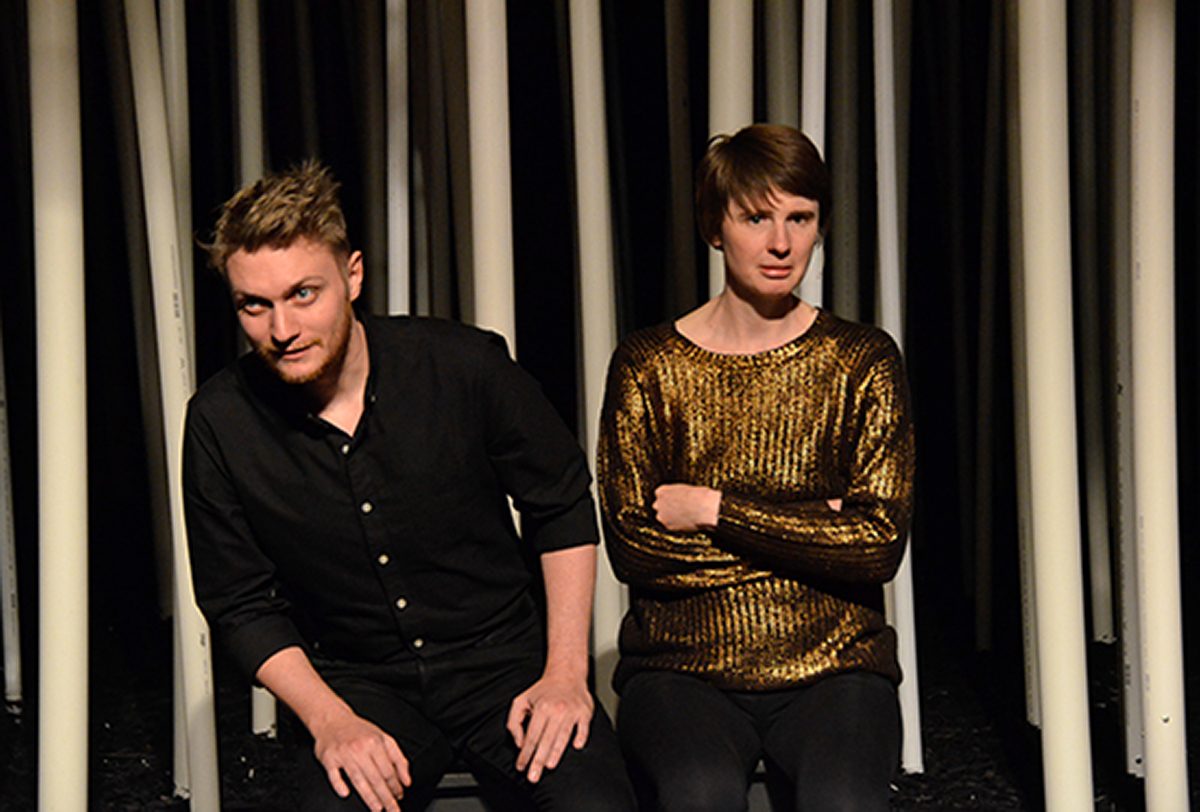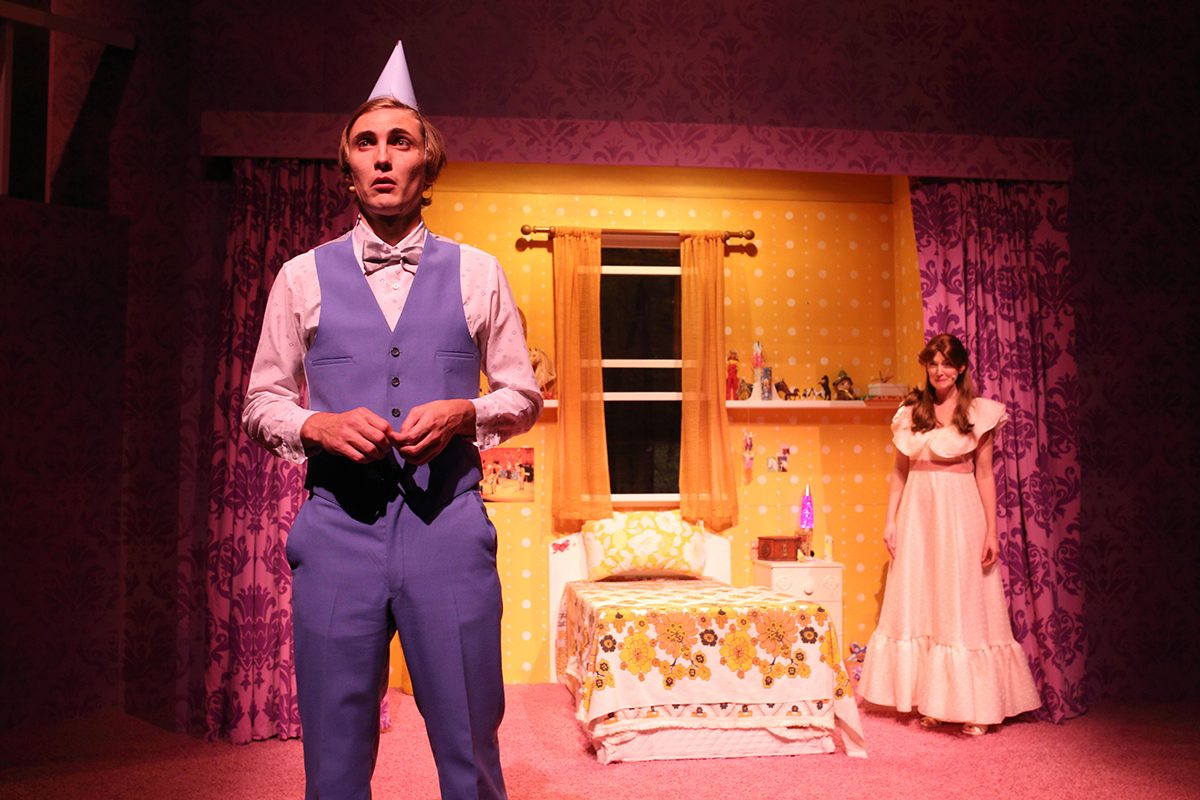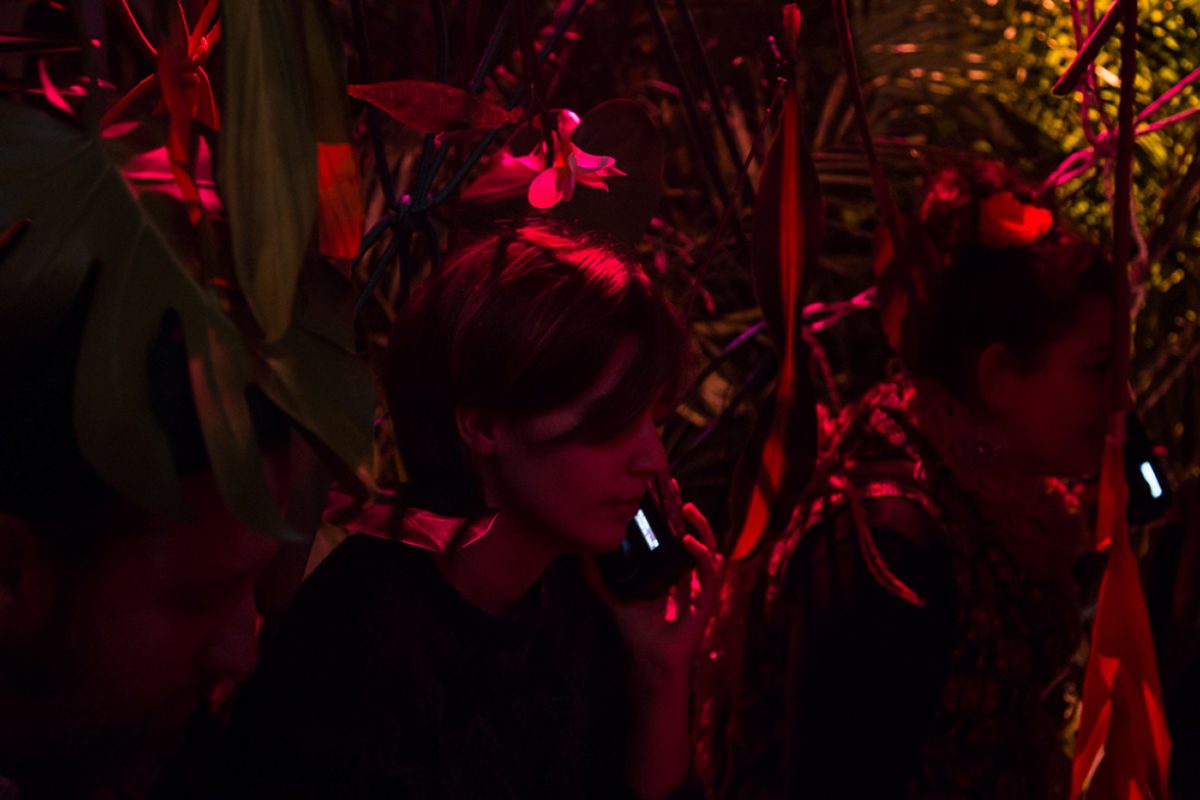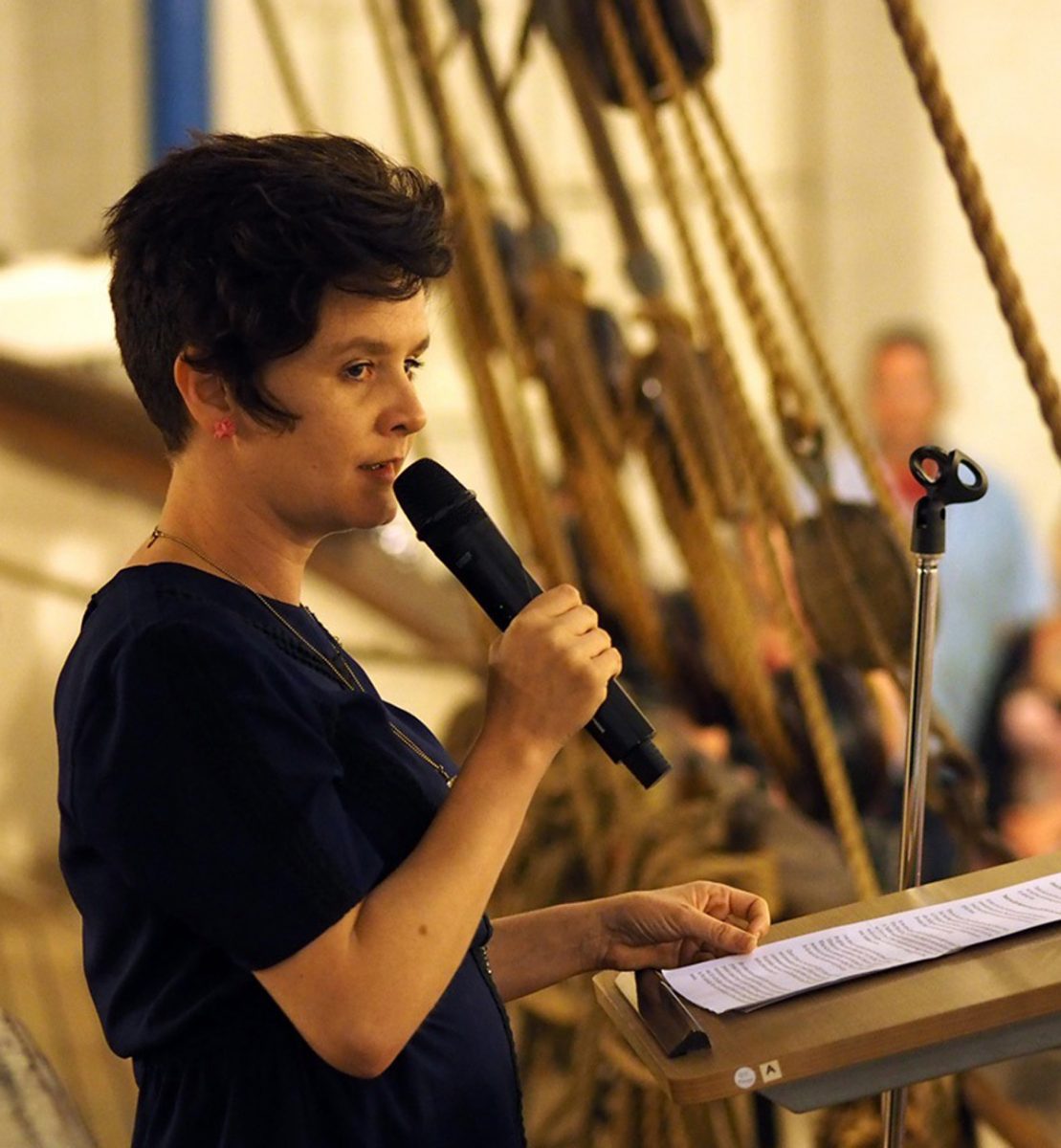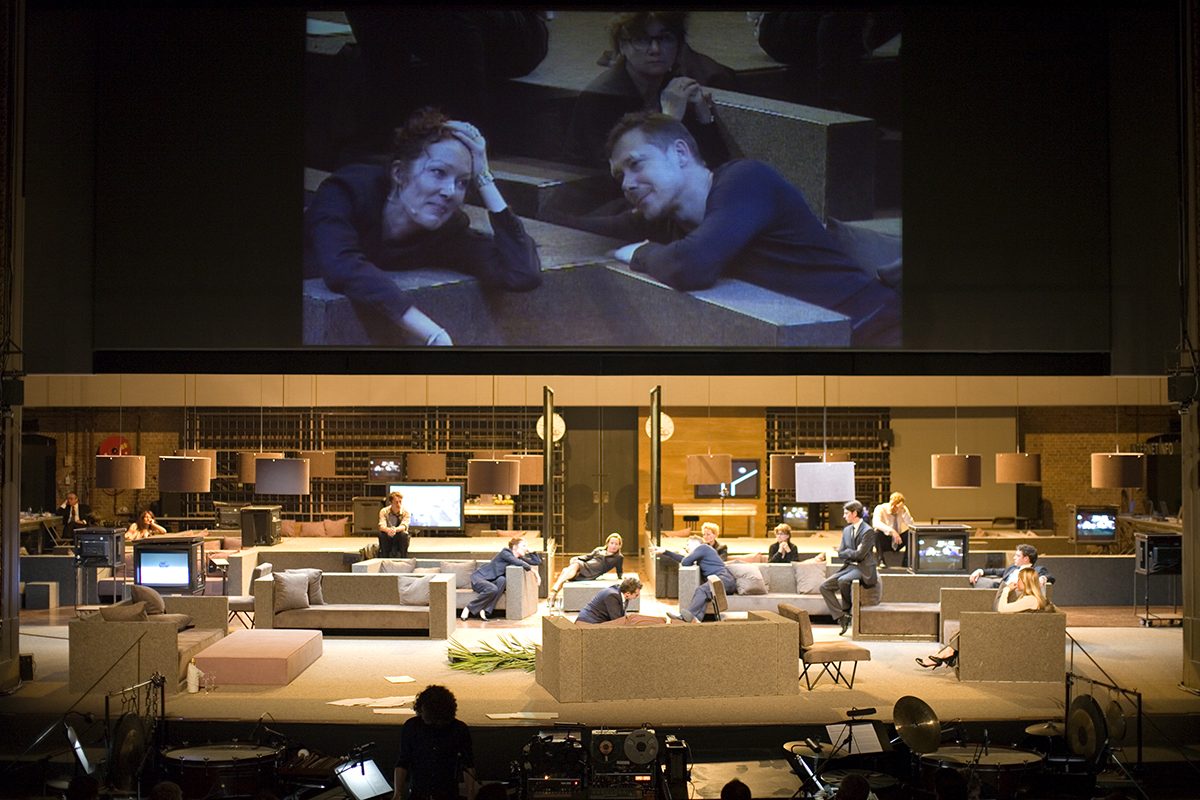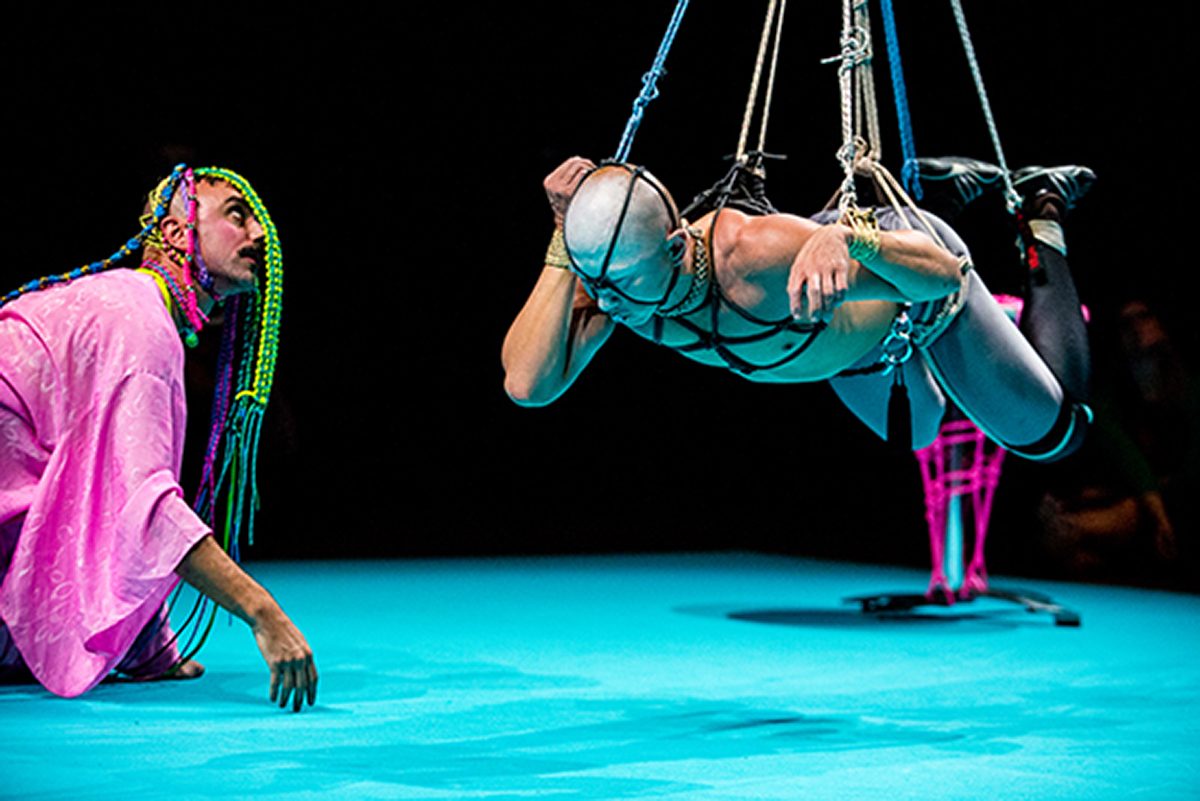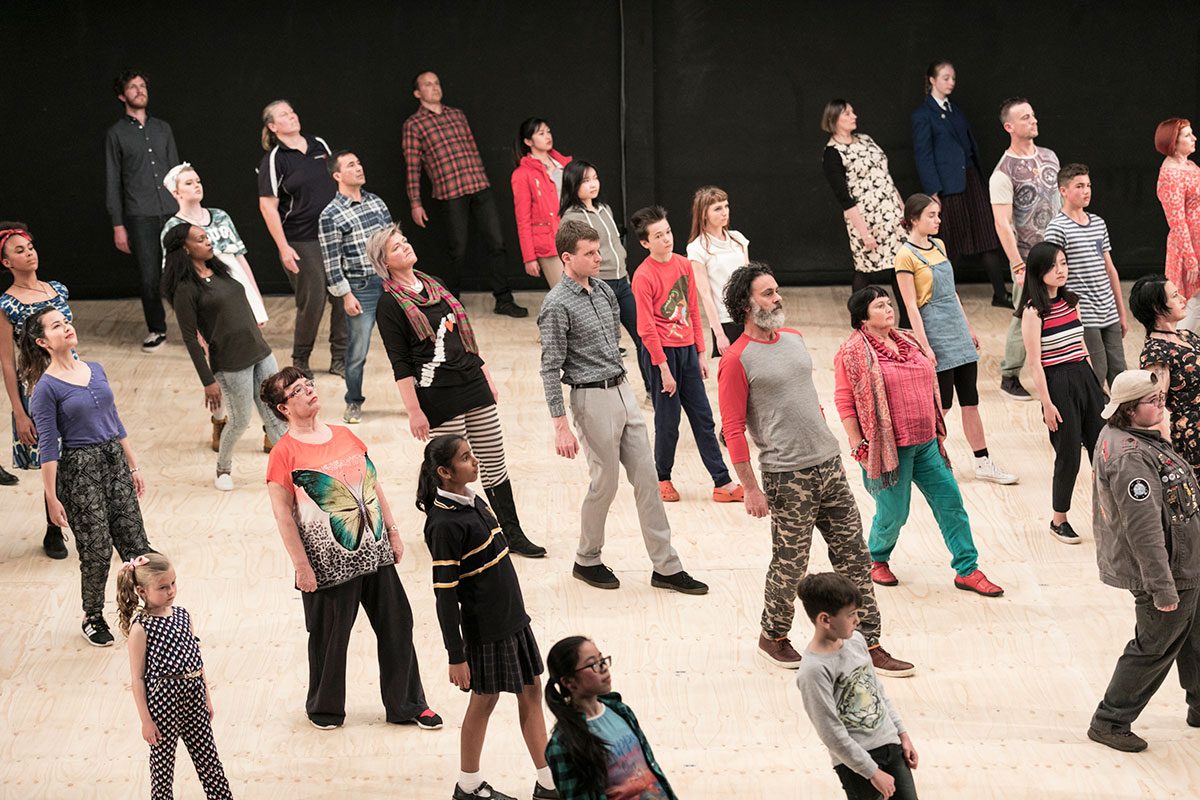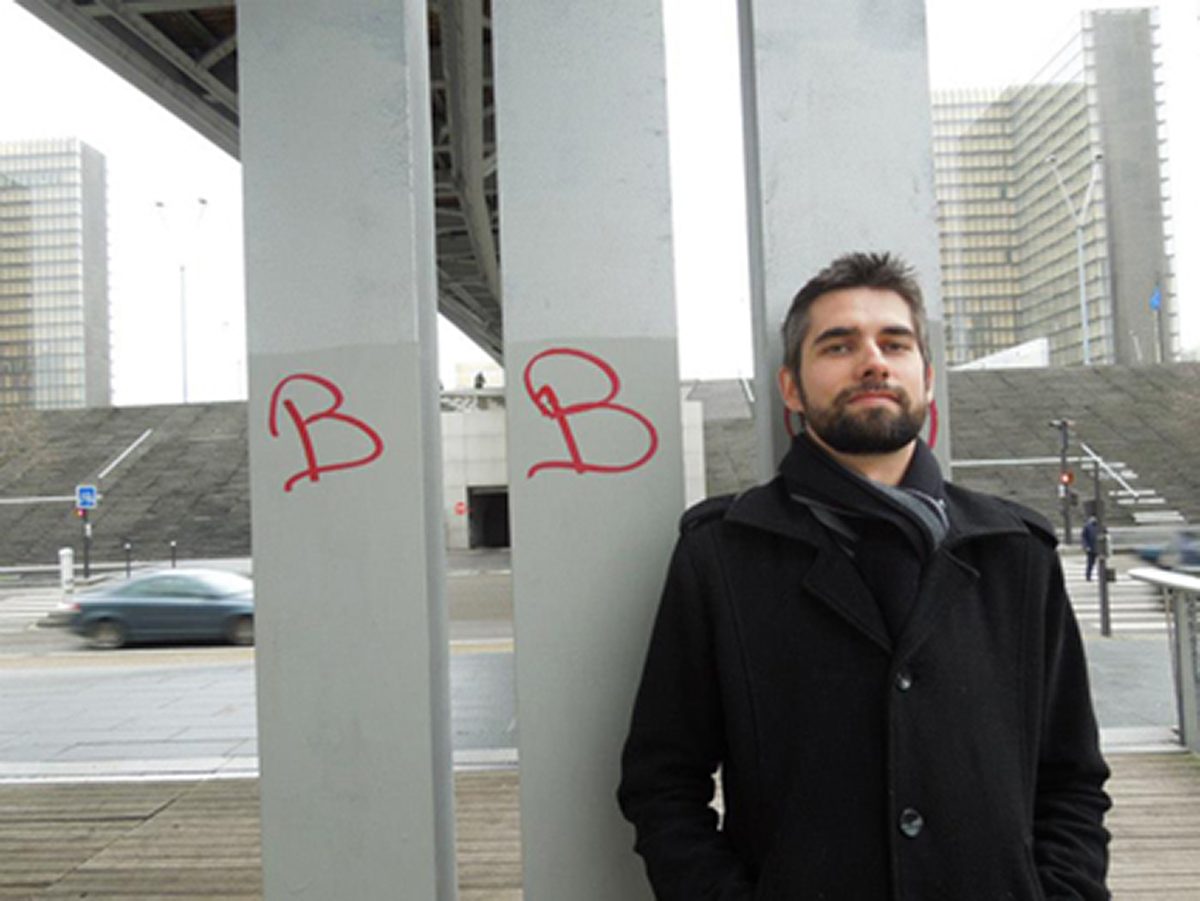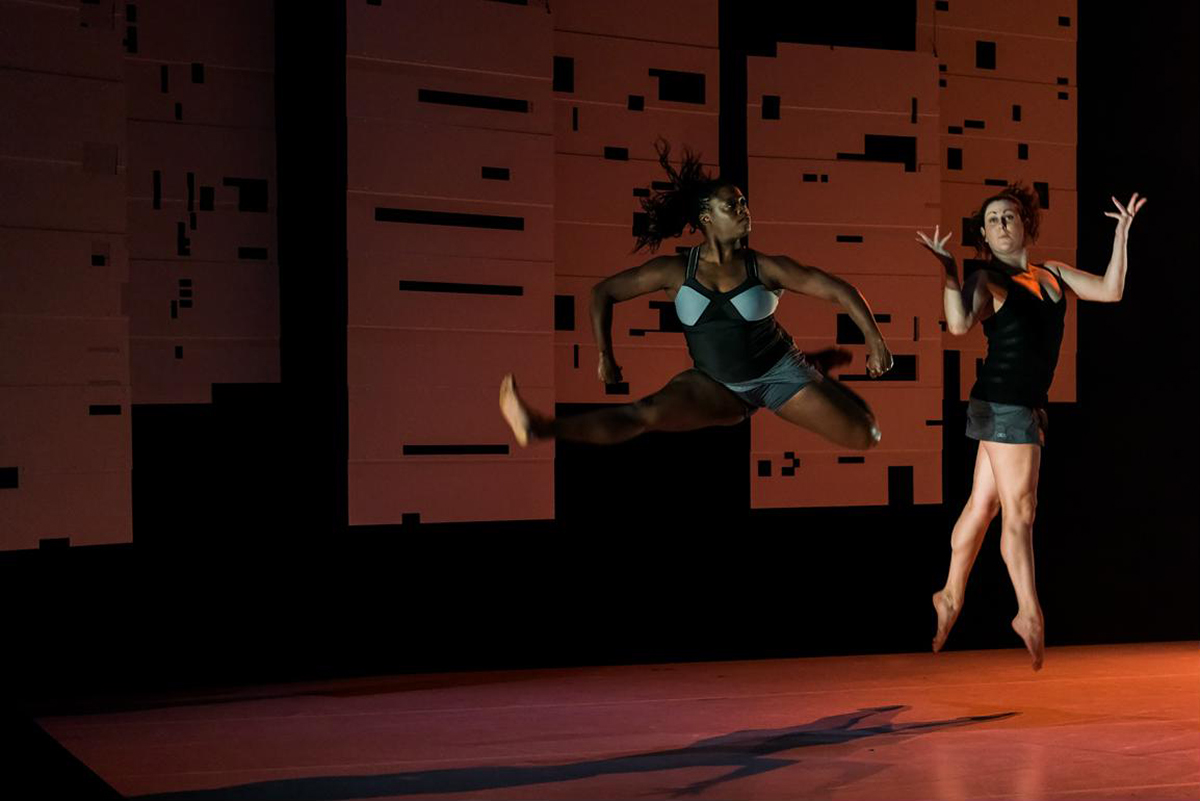
Performance in a progression-regression helix, Adelaide 2011-17
In her much-viewed 2009 TED Talk, Nigerian writer Chimamanda Ngozi Adichie spoke of “the danger of a single story.” How then to sum up a time or a place to do justice to a culture’s multiplicities without resort to the constricting cliché, the sweeping overview that brushes them out of sight? Adelaide is a small city but that makes the summariser’s task no easier. The endless push and pull between progress and regression, largesse and meanness — evident anywhere the arts are a political plaything — is, if anything, more keenly felt in a city of this size, more resistant to abbreviation.
Braving institutionalised disadvantage
The story of the arts in Adelaide has really always been two stories, a double helix of conservatism and innovation, retreat and growth. Plans are revealed for a new contemporary art gallery while the Contemporary Art Centre of South Australia (established 1942) and the Australian Experimental Art Foundation (est 1974) are forced to amalgamate, having lost operational Australia Council funding, along with key small to medium companies Brink, Slingsby and Vitalstatistix, in then Arts Minister George Brandis’ cuts in 2015 with which he funded his Excellence in the Arts (subsequently Catalyst) program. Independent theatre companies come and go, initiatives flare and then burn out. Artists take flight to Melbourne, chasing a slice of that city’s comparatively munificent arts funding arrangements, or else Berlin, or Athens.
Adelaide is an amnesiac, often parochial city in thrall, largely, not to culture but to festivals (yet another one, Australian Dance Theatre’s Adelaide Dance Festival, was added this year), and where four weeks of intense cultural activity across February and March can feel offset by 11 months of small-town torpor. Millions of dollars pour into capital investments and major institutions — Her Majesty’s Theatre, Adelaide Contemporary Gallery, Adelaide Festival and Adelaide Festival Centre — while generators and incubators of new work, starved of funds, scrabble for the few spaces that are available to them. Vocational education teeters on the edge, its creative art courses written off by the Federal Government as “lifestyle choices” unworthy of public subsidy (the current intake to the Advanced Diploma of Arts [Acting] at the Adelaide College of the Arts, which I wrote about in my interview with Head of Acting Terence Crawford in 2016, numbers a mere six students). It’s widely expected that this year’s State Budget, to be delivered in September by South Australia’s first conservative government in 16 years, will see a further depleting of the already meagre arts funding pool.
Emergence & renewal
And yet, throughout the period 2011–2017 in which I wrote for RealTime, artists emerged, consolidated and renewed, all the while pressing at the boundaries of form and theme. Enterprising small players abounded: Emma Beech, Tessa Leong, Gravity and Other Myths, Larissa McGowan, Jason Sweeney, Stone/Castro and Restless Dance Theatre, which, under PJ Rose’s transformative Artistic Directorship (1997-2016), was a model of growth and engagement in one of the sectors most strained by funding cuts. Windmill, with its distinctively design-focused brand of children’s theatre under Artistic Director Rosemary Myers, Australian Dance Theatre (now finally given its own venue after years of limited funding ‘shared’ with Leigh Warren and Dancers and others) and the State Theatre Company’s support of local writers — chief among them Phillip Kavanagh, Emily Steel and Elena Carapetis — produced similarly energising work.
Meanwhile, arts organisations forged new partnerships, found unexpected camaraderie in the face of loss. As I wrote in RT in June 2017, “…it strikes me too that one of the few good things to have come out of the funding crisis has been a refreshed sense of industry solidarity, of people and organisations reaching out across artistic divides — perhaps not as wide as we had first thought — in ways that have not, or only fitfully, happened before.” One such organisation, whose Artistic Director Emma Webb I interviewed for that piece, is Vitalstatistix, which – along with the Adelaide Festival Centre’s inSPACE program — has proved a necessary incubator of contemporary, multi-disciplinary art of national as well as local significance.
Vitalstatistix: exemplary incubator
The list of artists Vitalstatistix has worked with in the past six years, as both a presentation and development partner, speaks to the company’s animating commitment to furthering experimental modes of performance and engagement. Above all, Adhocracy — the company’s yearly national artist hothouse — has stood out for me, shifting from a daylong to half-week format the year I began writing for RT. I won’t soon forget Cat Jones’ Somatic Drifts (2014), a “full body experience for one person at a time…proving unexpectedly affecting in its therapeutic, closely guided dislocations of sense and self as well as its emotive engagement with ideas around the fostering of empathy between species” or Crawl Me Blood (2015), a multidisciplinary work-in-development drawn from Jean Rhys’ 1966 postcolonial novel Wide Sargasso Sea and led by Halcyon Macleod and Willoh S Weiland of large-scale arts project specialists Aphids.
In attempting to convey the effect of its hybridity and immersiveness, I wrote on my blog: “Almost all of the human senses were played upon in vignettes, redolent of the novel’s setting, that had us gently assailed by the Flour Shed’s massive industrial fans (the Caribbean’s famous trade winds?), handed cups of rum punch as we entered a room imbued with a tropical atmosphere, and situated us as witnesses to monologue-as-autobiography, the construction of a pineapple sculpture, and the loud, unnerving intrusion of a ute into the space. All the while, the distinctive chiming of steel drums teased the edges of our hearing, not to mention our wintered faculties with evocations of warmer climes. What a joy and a privilege to see a work of such scale and lightly worn ambition so early in its life, and at a time when economic and, concomitantly, aesthetic austerity, is the name of the game.”
This year saw Vitalstatistix present Joan, the first plank of a multi-year partnership between the company and Melbourne-based feminist experimental theatre collective THE RABBLE that will also include a durational performance event inspired (and ‘repulsed’) by James Joyce’s Ulysses and developed in collaboration with a group of South Australian artists. Remarkably, just as Adelaideans had to wait until this year’s Adelaide Festival to finally see the Hayloft Project’s dynamic reworking of Seneca’s Thyestes — one of the key recent pieces of Australian independent theatre, first performed in Melbourne in 2010 — THE RABBLE’s work had not come to Adelaide before, despite the more than 10-year-old company having been commissioned and programmed by the likes of Melbourne and Brisbane Festivals, the Malthouse and Belvoir Theatres, Dark MOFO and Carriageworks. As the multi-million dollar projects to expand Her Majesty’s Theatre and redevelop the Festival Centre promise fewer commercial musicals will pass Adelaide by, there is no guarantee at all that THE RABBLE’s brand of formally experimental and interrogatively charged work, and others like it, will, in good time, find a place here but for the determination of small, under-resourced arts organisations such as Vitalstatistix. As I said, retreat and growth.
Adelaide Festival: flashes of life
While small, idiosyncratic festivals like Performance Art and Development Agency’s (PADA) Near and Far — curated by Emma Webb and Steve Mayhew — showcased “new works of wide-ranging and resonantly contemporary form and theme by Australian and international artists” (RT130), no doubt some of this dissident energy has infiltrated mainstream arts festival programs too. Of David Sefton’s 2013 theatre program for his first of four Adelaide Festivals, I noted “its emphasis on the interactive and interdisciplinary. Belgian company Ontroerend Goed’s immersive trilogy — The Smile Off Your Face, Internal and A Game Of You — came to define the program in the eyes of many, its intimacy challenging long-established expectations to do with the size and spectacle of the festival’s offerings (RT120).”
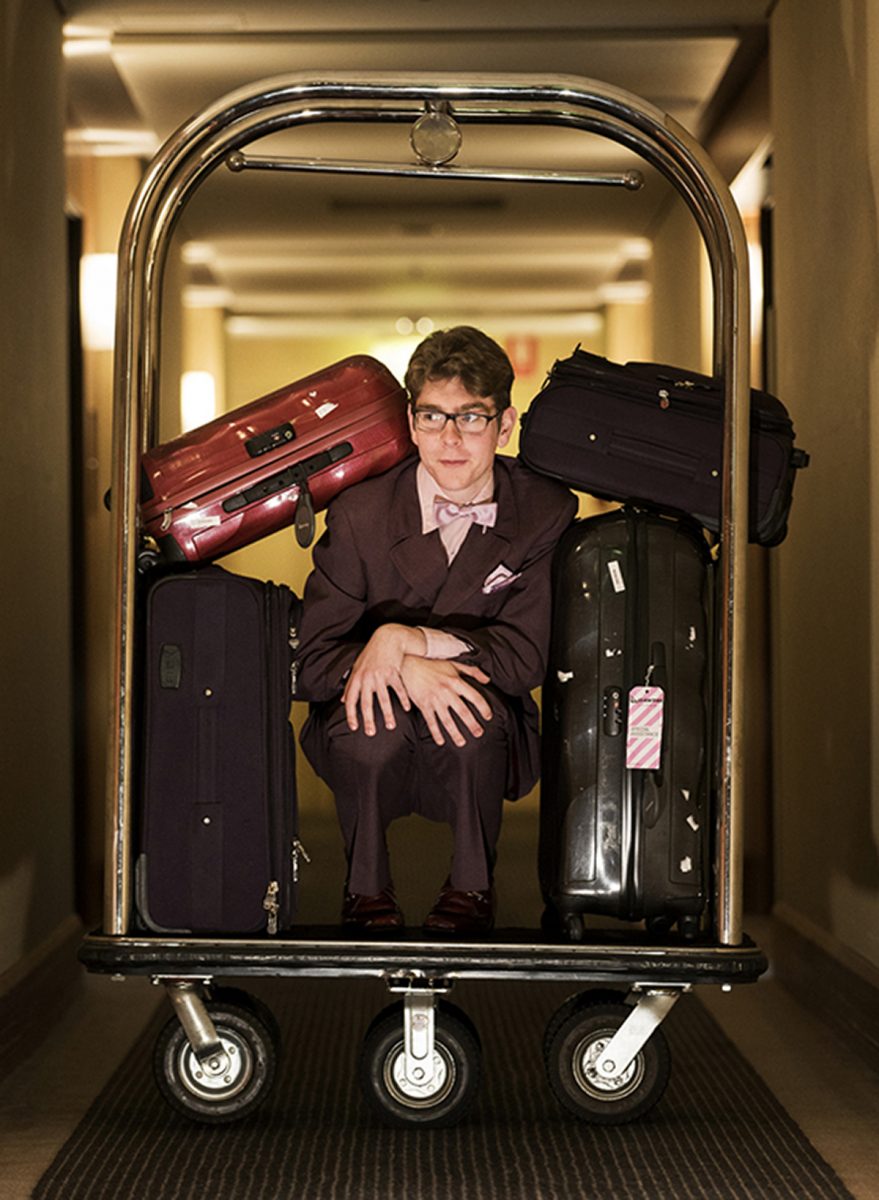
Michael Noble, Intimate Space, Restless Dance Theatre, Adelaide Festival 2017, Restless, photo Shane Reid
Under Neil Armfield and Rachel Healy, the Adelaide Festival’s co-Artistic Directors since 2017, new music has been deemphasised — Sefton’s Unsound programs, as my colleague Chris Reid noted in RT in July, having “extended contemporary music’s reach beyond its typical niche audience” — while disability theatre and dance, a perennially vibrant though traditionally under-regarded part of Adelaide’s arts ecology, has penetrated both the Adelaide Festival (Restless Dance Theatre, Intimate Space, RT137) and OzAsia (Tutti, Shedding Light and Beastly, RT134). Of the former, “a promenading, site-specific work that situates the company’s performers with disability in various quarters of the Hilton Hotel in Adelaide’s CBD”, I wrote: “…we are all subject to the gaze here, to a Lacanian anxiety that comes from looking, and being looked at. It is in this ‘play of light and opacity’ that Intimate Space revels…emphasis[ing] the significance of both locating bodies with disability in spaces that they are all too often absent from, and the powerful effect of the return of the gaze to its subject.”
It will be interesting to see what the remainder of Armfield and Healy’s record-breaking five-year tenure will bring (just announced as the centrepiece of 2019’s Festival is Barry Kosky and Suzanne Andrade’s Magic Flute). While I anticipate with diminishing enthusiasm a consolidation of the festival’s historically Eurocentric, shopping trolley programming model, works of redoubtable scale and vision by Pina Bausch (Nelken, RT131), Romeo Castellucci (Go Down, Moses, RT131), and Ivo Van Hove (Roman Tragedies, RT120), especially will nevertheless long remain emblazoned on my mind. Of the latter, I wrote that it, “…eschewed critique, paring back the poetry of Shakespeare’s Roman histories to plain, contemporary English (via Dutch) and rendering the plays with the urgent, pummelling aesthetic of the 24-hour news media. Audience members will recall for a long time performances, especially those by Gijs Scholten van Aschat, Frieda Pittoors and Hans Kesting, of a rare intensity — Shakespeare given back to us by way of nothing more alchemical than the actor’s craft in unencumbered motion” (RT Profiler 8).
This is to say nothing of the powerfully intimate (and sometimes implicating) solo works, Cristian Ceresoli and Silvia Gallerano’s La Merda (RT126) and Danny Braverman’s Wot? No Fish!! (RT137) among them, that left similarly enduring impressions. Despite a glut of variously confessional solo shows in recent years, such boldly imaginative works — along with UK performance artist Bryony Kimmings’ Fake It Till You Make It and Sex Idiot, which I wrote about for Daily Review — suggested the monologue form is far from exhausted. (Although, conversely, it has also been interesting in the same period to witness a ‘scaling up’ of Indigenous work from the influential one-person shows of the 1990s and early 2000s, chief among them Wesley Enoch and Deborah Mailman’s 7 Stages of Grieving, to works of considerable size and ambition like the Malthouse Theatre’s Shadow King, Enoch’s Black Diggers, and Deborah Cheetham’s Pecan Summer, which I also wrote about in the Daily Review).
OzAsia: festival of the cultural moment
More so than the Adelaide Festival, however, it is OzAsia, reinvigorated since 2015 under the artistic directorship of Joseph Mitchell, that has engaged with innovative live and media arts, “Mitchell’s adventurous programming,” as I wrote in RT July 18, “representing the formal and conceptual breadth of contemporary Asian performance.” Featuring work from Israel, the United States, and elsewhere, Mitchell’s programs have sought to reflect the increasing global influence of Asian art rather than simply offer a sort of lazy susan of geographically and culturally discrete works. Springing to mind are encounters memorably queer (Luke George and Daniel Kok, Bunny, SoftMachine: Rianto, RT135), immersive (Teater Garasi, The Streets, Toco Nikaido, Miss Revolutionary Idol Berserker, RT130), and communitarian (600 Highwaymen, The Record, RT October 2016) and Cry Jailolo, “Eko Supriyanto’s enthralling take on North Maluku tribal dance”).
Locating the contemporary in Asia, as opposed to the exotic in Australia, this is, as Keith Gallasch wrote in RT in June 2016, “the OzAsia Festival many of us have been waiting for, to see work we’ve only ever read about, glimpsed while travelling or, eager to learn, have never heard of, such is the paucity of contemporary Asian performance reaching Australia despite the dedication of a handful of producers.” This is changing — “more and more dance, theatre and cross-artform work from Asia is being programmed by Australian festivals and flagship companies, often off the back of seasons at OzAsia,” as I noted in RT in July — but perhaps not as quickly as we would wish.
In want of a rehumanising spell
If anything connects the works I have mentioned here — and it is a necessarily selective record, not even broad enough to encompass contemporary dance’s embrace of science and technology or the resurgence of performance art, two recent trends I have observed with fascination — then perhaps it is captured by British writer and critic Olivia Laing’s idea of the “rehumanising spell.” As the world’s collective heart hardens towards the displaced and the different, the single story will simply not do to foreground our humanity or our diversity — a buzzword now, yes, but no less powerful for it. In these times of austerity and “efficiency,” I fear a relapse into an enervating conservatism by our major performing arts companies, a failure to assimilate the quiet revolutions of form and feeling taking place all about the mainstream. In this respect, Adelaide may well prove the canary in the coalmine.
–
You can read about Ben Brooker here.
Top image credit: Kialea-Nadine Williams, Larissa McGowan, Mortal Condition, photo Daniel Purvis


